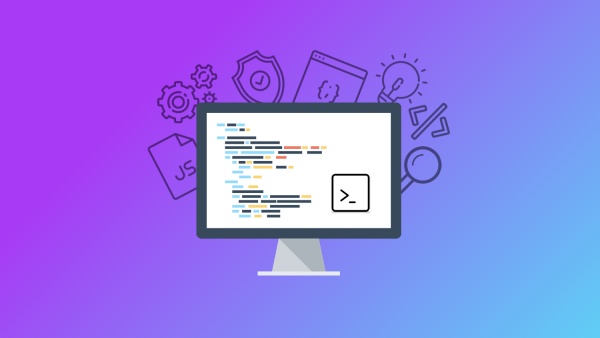What you'll learn
- Ace the coding interview at top tech companies (Google, Amazon, Facebook/Meta, Apple, Microsoft, Netflix + others)
- Step-by-step guide to solving common questions and how to best present them during the tech interview
- The ultimate resource to prepare for coding interviews, tech interviews and programming interviews
- Insider tips & tricks from instructors who have worked for big tech companies and actually gone through and aced the interview process
- A mental framework on how to approach solving coding problems so that you can become a better problem solver and answer ANY question companies throw at you
- Use the right Data Structures and Algorithms to pass coding interview questions that have the optimal solution
- Become a better developer by mastering Computer Science fundamentals
- Learn exactly what you need to answer the most difficult questions
This course is part of our Master the Coding Interview series. We give you the step-by-step guide and framework to ace big tech coding interviews and answer any coding question they throw at you.
And the results speak for themselves.
Graduates of this course are now working at Google, Tesla, Amazon, Apple, IBM, Uber, Facebook, Shopify + other top tech companies.
This can be you.
By enrolling today, you’ll also get to join our exclusive live online community classroom to learn alongside thousands of students, alumni, mentors, TAs and Instructors.
Active. Thriving. Supportive. Helpful. Friendly. Motivating. Essential.
These are just a few of the words students use to describe the ZTM Discord which is also one of the biggest and most active developer communities on Discord.
Most importantly, you will learn from industry experts that has actual real-world experience working for these companies (and aced their interviews) in both Silicon Valley and Toronto.
- Want to land a job at a top tech company like Google, Microsoft, Facebook, Netflix, Amazon, Apple but you are intimidated by the interview process and the coding questions?
- Do you find yourself feeling like you get "stuck" every time you get asked a coding question?
- Feeling overwhelmed trying to answer questions on LeetCode?
- Worried that you won't be able to compete with Compuer Science grads for top jobs?
This course is your answer.
Using the strategies, lessons, and exercises in this course, you will learn how to master the coding interview and land an offer from the company of your dreams.
This is the ultimate resource to prepare you for coding interviews. Everything you need in one place!
Unlike many courses, we aren’t going to tell you:
"Do these 100+ interview questions, memorize the answers and hope your interviewer asks one of them in your interview."
No! That's not a strategy. And it's a terrible use of your time.
Throughout this course, you will learn a problem solving framework so that you can answer ANY interview question that these companies may throw at you (vs. hoping they ask one you've memorized).
You will then practice using this framework to answer common interview questions from these big tech companies.
We also teach you the principles and fundamentals that you can use to start recognizing certain common patterns in questions. So any question you get, you can use the framework to answer the question confidently in your programming interview.
Here is what you will learn to use in this course while answering coding interview questions step-by-step with us:
-
Big O Notation
-
Data Structures:
- Arrays
- Hash Tables
- Singly Linked Lists
- Doubly Linked Lists
- Queues
- Stacks
- Binary Trees
- Binary Search Trees
- Tries
- N-ary Trees
- Min/Max Heaps
- Priority Queues
- 2-D Arrays/ Matrices
- Graphs
- Adjacency List
- Adjacency Matrix
- Interface Design
-
Algorithmic Paradigms Used:
- Recursion
- Sorting
- Searching
- Tree Traversals
- Graph Traversals
- Breadth First Search
- Depth First Search
- Divide and Conquer
- Greedy Method
- Dynamic Programming
- Backtracking
-
Specific Algorithms Used:
- Hoare's Quickselect Algorithm
- Floyd's Tortoise and Hare Cycle Detection Algorithm
- Bellman-Ford Algorithm
- Dijkstra's Algorithm
- Topological Sort
What's the bottom line?
We (Yihua and Andrei) are Senior Engineers and Programmers who have worked and managed teams of engineers. We've been in these interviews both as an interviewee as well as the interviewer.
Our job as instructors will be successful if we are able to help you get your dream job that you never thought was possible.
This course isn’t just about helping you master the coding interview (which you will!).
You will also become a better problem solver which will help you throughout your entire career, making you a better programmer and helping you level-up in your career faster.
Mastering the FAANG coding interview can really change the course of your career and life. We’re excited to help you make that happen.
When's the best time to get started? Today!
There's never a bad time to learn in-demand skills. But the sooner, the better. So take your first step to landing your dream job today by joining the ZTM Academy. You'll have a clear roadmap to developing the skills to build your own projects, ace your coding interviews, get hired, and advance your career.
Join Zero To Mastery Now






